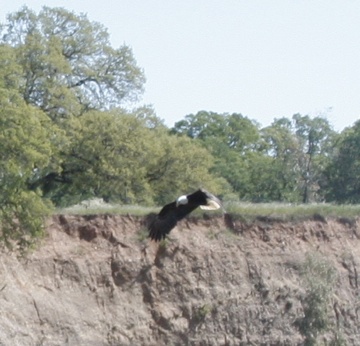This will not be a banner precipitation season for California–though always keep your eye out for the neighbor building boats and inviting in pairs of every creature. But that doesn’t mean it is without interest. For starters, it could well be a significantly below-par year for rain and snow here, which would make it three such years in a row, and that’s never good news. Already this year, the probability of a third drought year is getting spun by the governor and his water people to bolster their campaign for more dams and fancy plumbing. You have to admire their pluck; with the state $40 billion in the hole just to buy things like bullets for the Highway Patrol, stun guns for prison guards, paper clips for the bureaucrats, and adult diapers for the Legislature, the guv and company are talking about getting the taxpayers to spring for another $10 billion or so.
Anyway. Talking rain at work today, someone produced a list that purports to show that a place called Blue Canyon, on Interstate 80 (and the Union Pacific) in the Sierra, is one of the 10 wettest locations in the Lower 48 states (and the wettest in California). It gets 68 inches of precipitation a year. No way, no how that is the wettest place in California. My money’s on Honeydew, a hamlet on the Mattole River in Humboldt County. With our neighbors, the Martinuccis, we actually drove through Honeydew once on our way up the coast. I have an impression of a general store and a narrow bridge. There’s some evidence–disappointingly scanty, to be honest, but it includes an official-looking listing of each state’s wettest location–that Honeydew regularly gets 100 inches plus of rain a year.
And leaving Honeydew out of the picture for a moment, there are at least half a dozen places up on the North Coast–towns like Fort Dick and Crescent City in Del Norte County–and further south–like Cazadero in Sonoma County–all average more than 70 inches a year.
Not that Blue Canyon doesn’t deserve attention. Some with the Weather Service credit it with being the snowiest recording station in the Lower 48 (averaging 240.8 inches a year). But here’s my favorite: in a table succinctly labeled “Mean Monthly and Annual Number of Hours with Measurable Precipitation, with Percent of Hours and Maximum 1-Hour Totals,” Blue Canyon is way out ahead of any California listing: On average, it’s precipitating there 10.6 percent of the hours in the year–928 hours and 30 minutes, roughly. Of course, that would make it just a run-of-the-mill place in much of Oregon and Washington (Portland’s percentage of precipitation hours per year: 10.9).

 Needing to have something in my hands to read the other day, I spotted a book of Thom’s (I think): “
Needing to have something in my hands to read the other day, I spotted a book of Thom’s (I think): “
